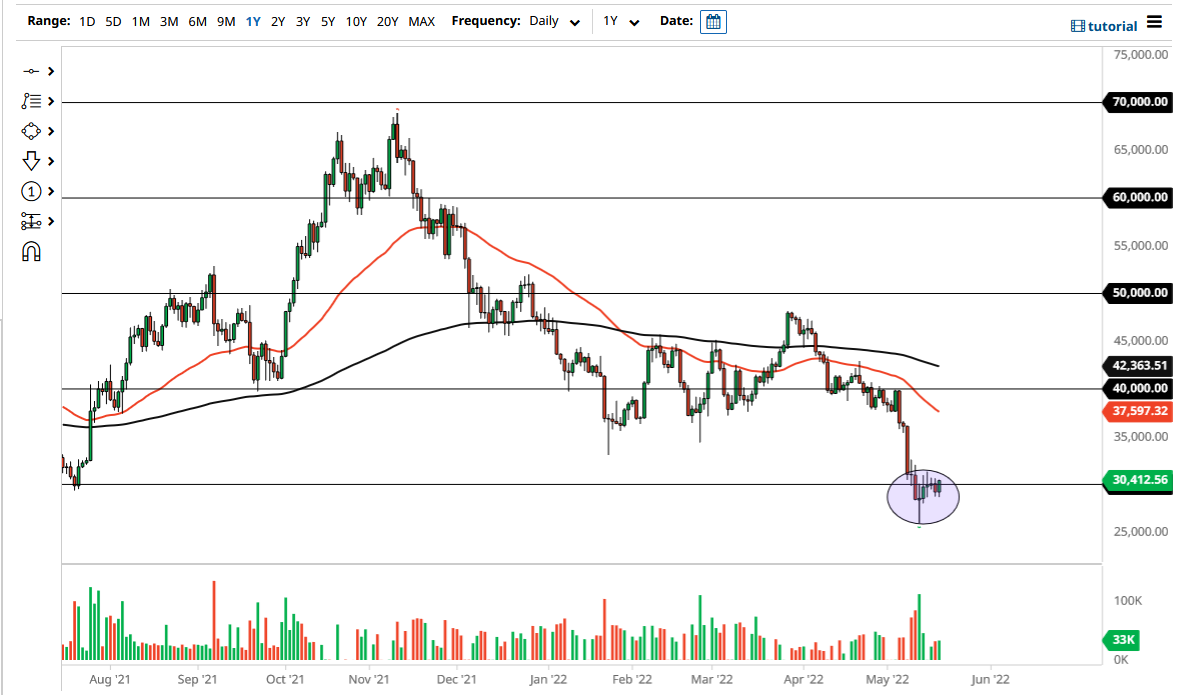Bitcoin has rallied ever so slightly during the trading session on Thursday, as we continue to hang about the $30,000 level. There does seem to be a certain amount of hope or wishful thinking going on out there, so be interesting to see how this plays out. Quite frankly, I think it is probably only a matter of time before something bad happens, but a bounce could be the first thing. In fact, I would not be surprised at all to see this market bounce, but I would also anticipate a lot of selling pressure above.
As long as there is an institutional desire to own US dollars, mainly as a function of the Eurodollar system, it is going to be difficult for Bitcoin to attract a lot of major inflows. Yes, some retail traders will live and die by Bitcoin, but they do not move the market. In fact, the people who do move the market are shunning Bitcoin as a lot of them have just been eviscerated and other crypto markets.
If we break down below the bottom of the candlestick from last week which is at roughly $25,854, this market will make a beeline towards the $25,500 level, and then eventually the $25,000 level after that, dragging the rest of the crypto markets down with it. A lot of what you are seeing here is due to US dollar strength, and a general “risk-off” type of attitude around the world. I find it difficult to believe that a lot of money is suddenly going to go looking to get involved in these types of markets, as we need some type of stability in more traditional markets to even approach that type of environment.
While I do believe that Bitcoin will be a good investment longer-term, I also believe that you will get an opportunity to start buying at much lower prices. If we head into the type of buzzsaw recession I think is starting to be imagined, this will send the entire crypto market much lower. It is only when you have cheap central bank money that crypto gets a huge bid. After all, one of the huge tenants of crypto has been all of the central bank’s “printing of money.” (This is a ridiculous concept because money is not created by central banks, it is created by loans.) Leaving that aside, it is worth noting that the Federal Reserve is getting tighter, not looser.

